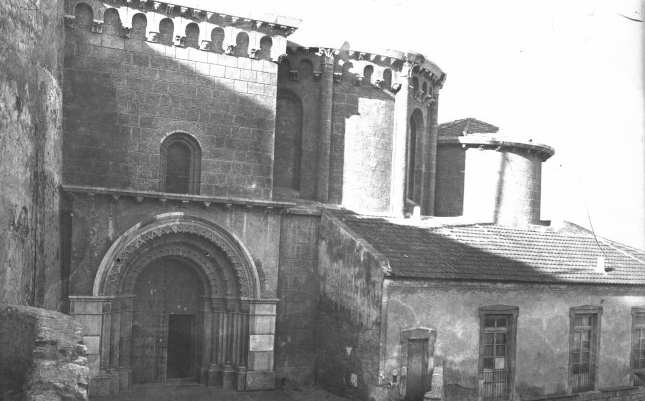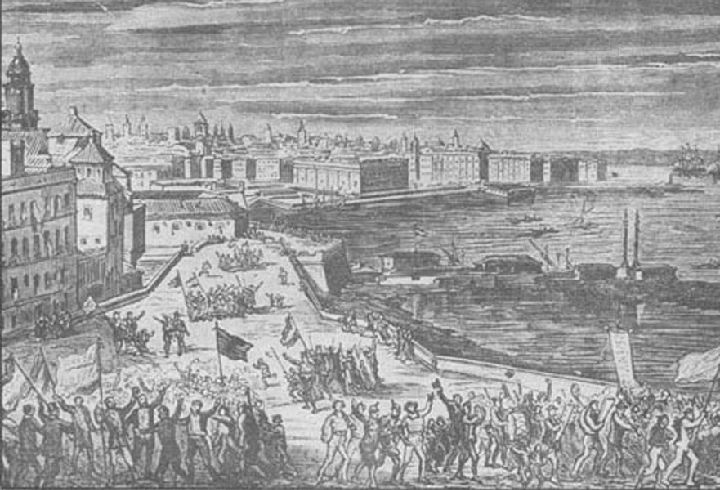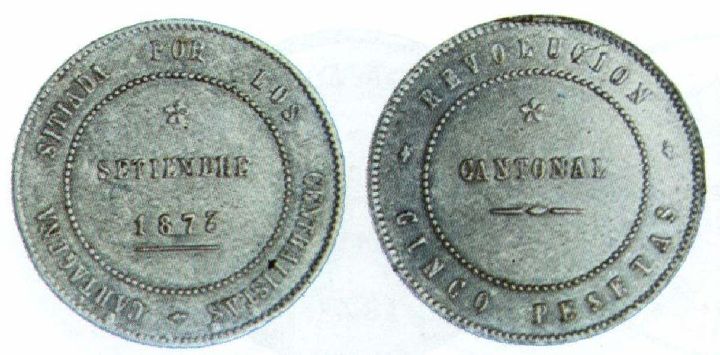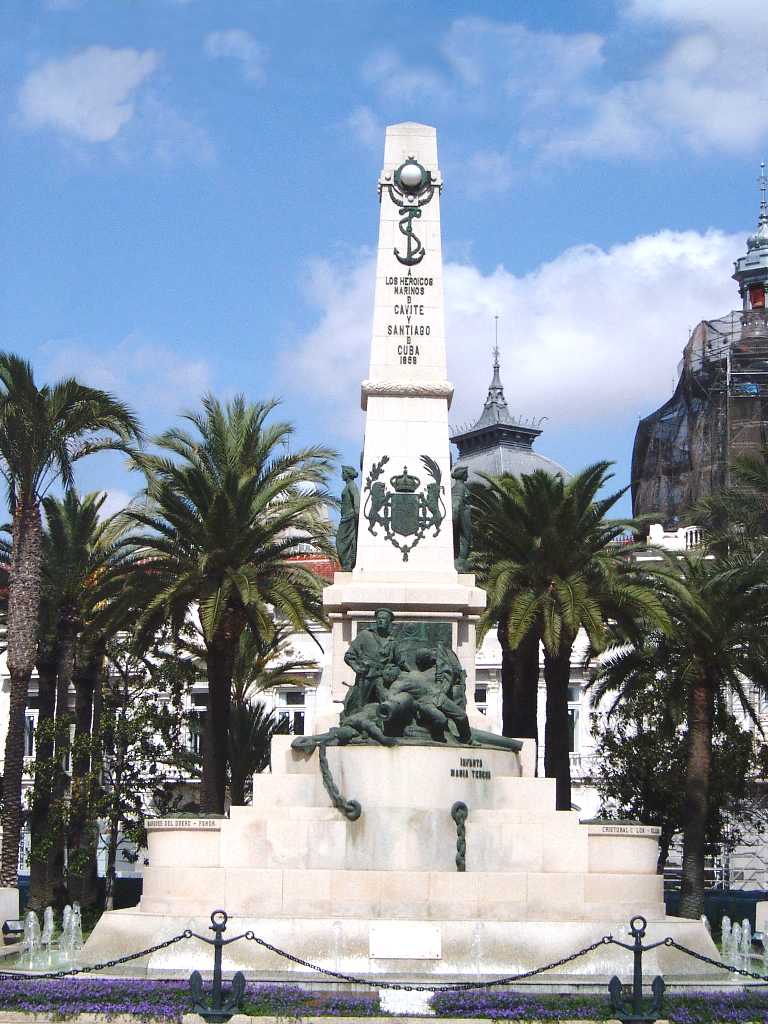
El Puerto de Cartagena fue deseado y codiciado desde la antigüedad.

Desde la fundación de Kart-Hadast (Ciudad Nueva), por Asdrúbal, la historia de la ciudad y de su puerto han ido siempre de la mano.
Ya en tiempos de los romanos; la ciudad renombrada por el General Publio Cornelio Escipión como Cartago Nova y su puerto contribuyó al esplendor de la ciudad manteniendo una importante actividad comercial de importación y exportación de mercancías con África y Roma, y proporcionando, en el terreno militar, el principal depósito de guerra para las expediciones de represión y conquista romanas.
En la época Bizantina, el puerto y su arsenal fueron claves en las operaciones militares entre imperiales y visigodos.
El resurgimiento de la ciudad entre los siglos VIII y XIII, bajo dominación árabe, tuvo mucho que ver con el arsenal de Mandarache, el puerto y sus atarazanas, que sirvieron a los musulmanes para preparar sus expediciones de lucha y conquista por todo el Mediterráneo.
En la Edad Media, Alfonso X el Sabio creó la Orden de Santa María de España para la defensa naval de la Corona de Castilla y estableció en Cartagena su sede principal, utilizando el puerto para intensificar las relaciones comerciales de Castilla con el Mediterráneo occidental. Hasta entonces, la ciudad disponía de dos varaderos, el del Arsenal y la Playa de Santiago.

Es a partir del reinado de los Reyes Católicos cuando se intensifica el carácter militar del puerto y de la ciudad, que nos acompaña hasta nuestros días.
La industria naviera, junto con todos los oficios auxiliares, fue durante siglos la actividad más importante que hizo crecer la economía, la población, y la ciudad. Se construyeron los espigones de la Plaza y de San Leandro.
Estas mejoras, influyeron en la decisión de trasladar, en 1670, la invernada de las Galeras de la Flota desde el Puerto de Santa María a Cartagena.
Felipe V traslado la capital del Departamento Marítimo del Mediterráneo a Cartagena, hecho que condujo a la construcción del Arsenal en la bahía de Mandarache, que se transformó en dársena.
La visita de Isabel II a la ciudad en 1862 fue decisiva para la puesta en marcha de un nuevo impulso y una nueva etapa en la historia del puerto.
A finales del siglo XIX, el puerto se transforma con la construcción de los diques de Curra y Navidad, separados entre ambos por una boca de 500 metros, y del muelle comercial con una longitud de casi 800 metros, inaugurado por Alfonso XII del cual toma el nombre.

Con estas nuevas construcciones se dio un importante impulso al comercio marítimo, que junto con las actividades mineras de La Unión dan una gran riqueza económica a la ciudad, que crece y se embellece con magníficos edificios levantados por los más prestigiosos arquitectos de la época.
Cartagena fue y es testigo y protagonista de sucesos trascendentales en la historia.

El 12 de Julio de 1873 Cartagena proclamó la Rebelión Cantonal, liderada principalmente con Antonete Gálvez; militar progresista de origen humilde. Con la proclamación de la I República Federal (11 meses de vida) los cartageneros se sintieron traicionados porque vieron que los sucesivos Gobiernos que formaban eran unitarios y que les habían escamoteado el régimen federal que prometieron. Así como repudiaban el envío de jóvenes a las guerras coloniales de España, como la de Cuba de 1868.
La Rebelión llegó a acuñar moneda propia.

A pesar de los terribles bombardeos y devastaciones a que fue sometida durante los seis meses que duró su aventura cantonal, Cartagena fue la última ciudad española en caer en poder de las tropas centralistas, firmando la capitulación el 12 de enero de 1874.
En 1875 se creó la Junta de Obras del Puerto, organismo dependiente del Ministerio de Fomento, con el propósito de construir y gestionar las obras y servicios portuarios.
Durante los últimos años del siglo XIX y primeros del XX, los yacimientos mineros de la zona tuvieron un gran protagonismo en el movimiento portuario, y en 1880, el puerto de Cartagena fue declarado de Primer Orden.

De esta época datan la plaza de España, el paseo de Alfonso XIII, la fase definitiva de relleno del Almarjal y la urbanización del Ensanche. Se construyó la Capitanía, la plaza de San Francisco, las plazas de la Merced y Jaime Bosch, se inauguró el Monumento de los Héroes de Cavite y Santiago de Cuba y se redactaron y tramitaron los proyectos de traída de aguas potables desde el embalse del río Taibilla.
A mitad del siglo XX, en el Valle de Escombreras se instaló la primera refinería de petróleo de toda España y se construyen los primeros muelles en la dársena de Escombreras. En pocos años, la actividad industrial en el Valle de Escombreras y el tráfico en los muelles de esta dársena fueron creciendo y transformando ese lugar, que en el siglo XXI es la concentración industrial más importante de la Región de Murcia, genera miles de puestos de trabajo y tiene un gran impacto económico en la ciudad de Cartagena y en la Región de Murcia.
En 1928 el prototipo de submarino de Isaac Peral (que veremos en otro capítulo del Blog) fue remolcado desde Cádiz a Cartagena.
En 1931, Alfonso XIII dejó España siendo Cartagena la última ciudad española en la que estuvo antes de embarcar en la Fragata «Asturias» para dirigirse hacia su exilio, volviendo sus restos mortales en 1981 de nuevo a esta ciudad que le despidió años atrás.
En 1982 se aprobó el Estatuto de Autonomía de la Comunidad Autónoma de la Región de Murcia, por el que el municipio de Cartagena quedaba incluido en la Región de Murcia.
En 1992, la Junta de Obras del Puerto de Cartagena se transforma en Autoridad Portuaria de Cartagena.
El futuro de Cartagena está sin duda muy ligado al futuro de su puerto, y por ese futuro se trabaja cada día, con ilusión y constancia.
Sin embargo, la última conquista de la que ha sido objeto Cartagena no ha necesitado armas: Los atractivos de la ciudad y su fachada marítima de postal, y sus numerosos museos la han puesto rápidamente en el mapa del turismo.
En 2008 y 2012, Cartagena quedó finalista en los premios internacionales Seatrade Insider Cruise Awards en la categoría de Puerto del Año.
Estos premios distinguen a los mejores puertos de cruceros del mundo.
En la actualidad, Cartagena es parada habitual en la ruta de los cruceros del Mediterráneo. 109 de ellos atracaron en su puerto en 2015, lo que supuso el desembarco de 151.000 pasajeros.
Se puede remarcar, uno de los cruceros más grandes del mundo que ha atracado en el puerto, conocido como «Independence of the seas«, el cual trajo a conocer y disfrutar la Ciudad a más de 4.000 turistas.

Dos mil años de historia han dejado en Cartagena un reguero de leyendas siempre con el mar como protagonista.
Si quieres saber más sobre esta Cartagena no puedes la próxima entrega del Blog.


Part II: That’s Cartagena.
The Port of Cartagena has been desired and coveted since ancient times.
Since the foundation of Kart-Hadast (New City) by Asdrubal, the history of the city and its port have always gone hand in hand.
Already in Roman times; the city renamed by General Publio Cornelio Escipión as Cartago Nova and its port contributed to the splendour of the city by maintaining an important commercial activity of import and export of goods with Africa and Rome, and providing, in the military field, the main war depot for the Roman expeditions of repression and conquest.
In Byzantine times, the port and its arsenal were key to the military operations between the Imperials and the Visigoths.
The revival of the city between the 8th and 13th centuries, under Arab domination, had much to do with the Mandarache arsenal, the port and its dockyards, which were used by the Muslims to prepare their expeditions to fight and conquer throughout the Mediterranean.
In the Middle Ages, Alfonso X the Wise created the Order of Saint Mary of Spain for the naval defence of the Crown of Castile and established its main headquarters in Cartagena, using the port to intensify Castile’s trade relations with the western Mediterranean. Until then, the city had two dry docks, the Arsenal and the Playa de Santiago.
It is from the reign of the Catholic Monarchs onwards that the military character of the port and the city intensified, a character that has remained with us to this day.
The shipping industry, together with all the auxiliary trades, was for centuries the most important activity that made the economy, the population and the city grow. The breakwaters of the Plaza and San Leandro were built.
These improvements influenced the decision to move the wintering of the Galleys of the Fleet from Puerto de Santa María to Cartagena in 1670.
Philip V moved the capital of the Maritime Department of the Mediterranean to Cartagena, which led to the construction of the Arsenal in Mandarache Bay, which was transformed into a dock.
The visit of Isabella II to the city in 1862 was decisive for the launching of a new impulse and a new stage in the history of the port.
At the end of the 19th century, the port was transformed with the construction of the Curra and Navidad docks, separated by an opening of 500 metres, and the commercial quay with a length of almost 800 metres, inaugurated by Alfonso XII, from which it takes its name.
These new constructions gave an important boost to maritime trade, which together with the mining activities of La Unión gave great economic wealth to the city, which grew and was embellished with magnificent buildings erected by the most prestigious architects of the time.
Cartagena was and is a witness and protagonist of transcendental events in history.
On 12 July 1873 Cartagena proclaimed the Cantonal Rebellion, led mainly by Antonete Gálvez, a progressive military man of humble origins. With the proclamation of the 1st Federal Republic (11 months old), the Carthaginians felt betrayed because they saw that the successive governments they formed were unitary and that they had been cheated of the federal regime they had promised. They also repudiated the sending of young people to Spain’s colonial wars, such as that of Cuba in 1868.
The Rebellion went so far as to mint its own coinage.
Despite the terrible bombardments and devastation to which it was subjected during the six months of its cantonal adventure, Cartagena was the last Spanish city to fall to the centralist troops, signing the capitulation on 12 January 1874.
In 1875, the Junta de Obras del Puerto (Port Works Board) was created, a body dependent on the Ministry of Development, with the purpose of building and managing port works and services.
During the late 19th and early 20th centuries, the mining deposits in the area played a major role in the port movement, and in 1880, the port of Cartagena was declared a First Order port.
Plaza de España, Paseo de Alfonso XIII, the definitive phase of filling in the Almarjal and the urban development of the Ensanche date from this period. The Capitanía, Plaza de San Francisco, the squares of La Merced and Jaime Bosch were built, the Monument to the Heroes of Cavite and Santiago de Cuba was inaugurated and the projects for bringing drinking water from the reservoir of the river Taibilla were drawn up and processed.
In the middle of the 20th century, the first oil refinery in Spain was installed in the Escombreras Valley and the first docks were built in the Escombreras dock. In a few years, the industrial activity in the Escombreras Valley and the traffic on the docks of this dock grew and transformed this place, which in the 21st century is the most important industrial concentration in the Region of Murcia, generating thousands of jobs and having a great economic impact on the city of Cartagena and the Region of Murcia.
In 1928 Isaac Peral’s prototype submarine (which we will see in another chapter of the Blog) was towed from Cadiz to Cartagena.
In 1931, Alfonso XIII left Spain and Cartagena was the last Spanish city he visited before embarking on the frigate «Asturias» to go into exile, returning his mortal remains in 1981 to this city which had bid him farewell years before.
In 1982 the Statute of Autonomy of the Autonomous Community of the Region of Murcia was approved, by which the municipality of Cartagena was included in the Region of Murcia.
In 1992, the Board of Works of the Port of Cartagena was transformed into the Port Authority of Cartagena.
The future of Cartagena is undoubtedly closely linked to the future of its port, and for this future we work every day, with enthusiasm and perseverance.
However, Cartagena’s latest conquest of the city needed no weapons: The city’s postcard-perfect seafront attractions and its many museums have quickly put it on the tourist map.
In 2008 and 2012, Cartagena was a finalist in the international Seatrade Insider Cruise Awards in the Port of the Year category.
These awards honour the best cruise ports in the world.
Today, Cartagena is a regular stop on the Mediterranean cruise route. 109 of them docked in its port in 2015, which meant the disembarkation of 151,000 passengers.
One of the largest cruise ships in the world to dock in the port, known as «Independence of the Seas», brought more than 4,000 tourists to visit and enjoy the city.
Two thousand years of history have left a trail of legends in Cartagena, always with the sea as the protagonist.
If you want to know more about this Cartagena, don’t miss the next issue of the Blog.

